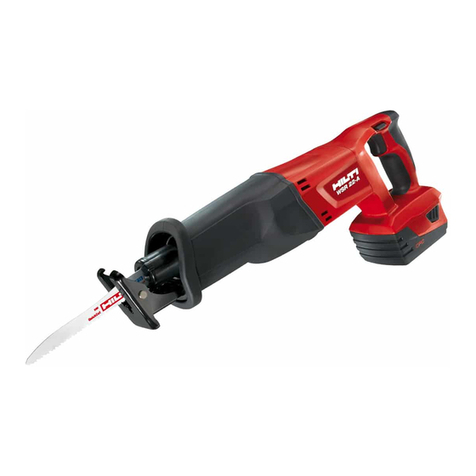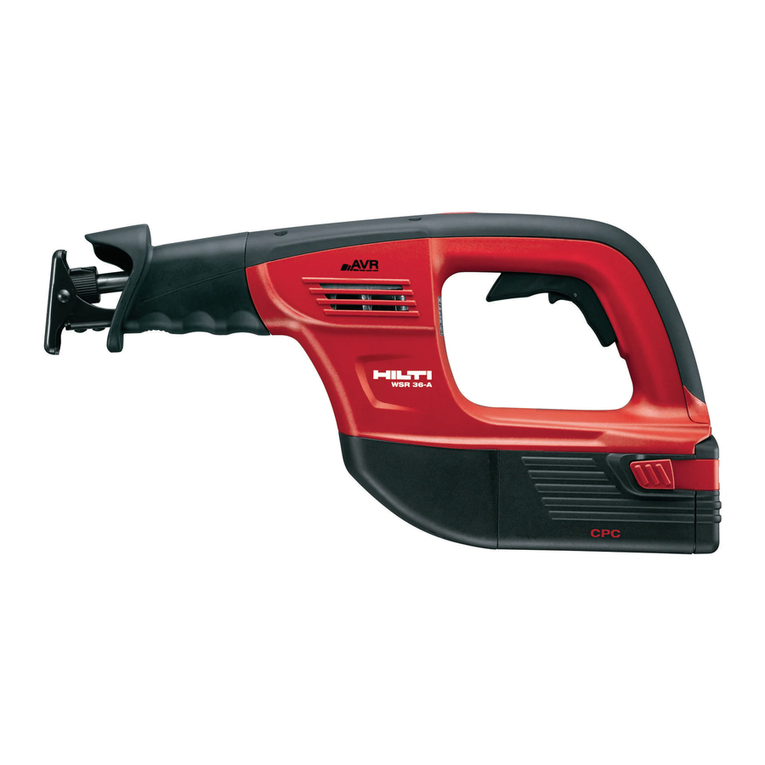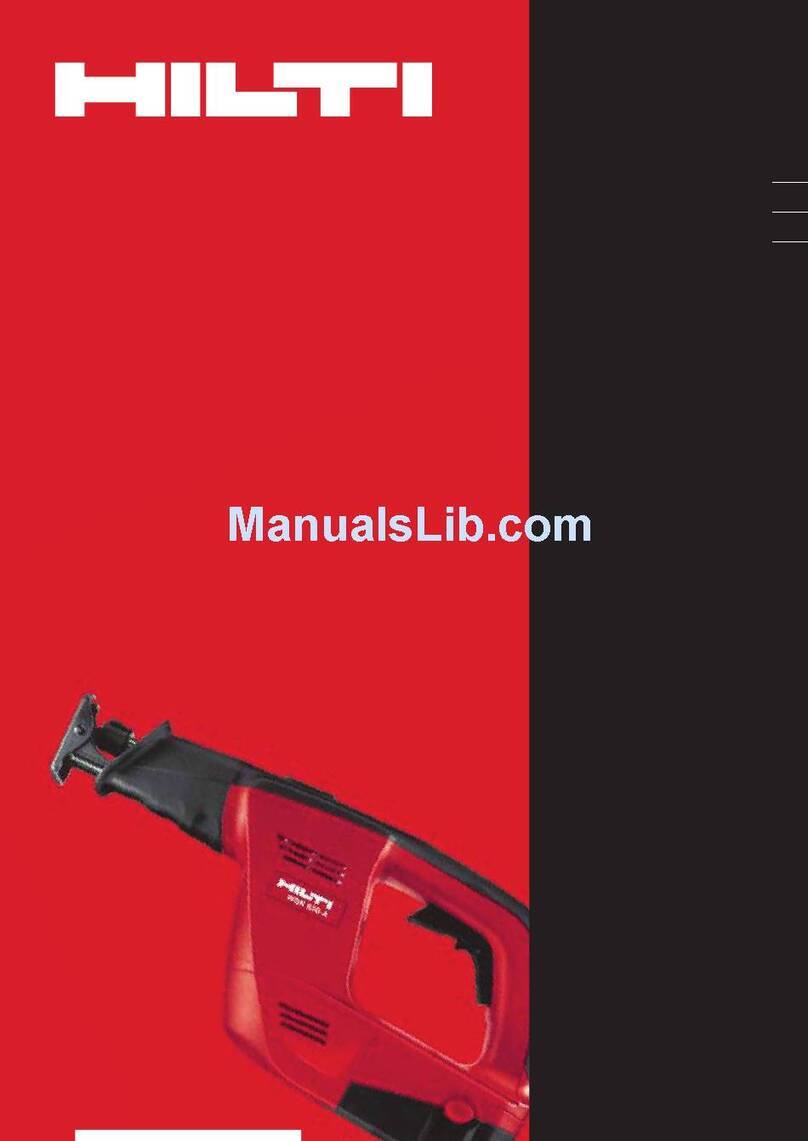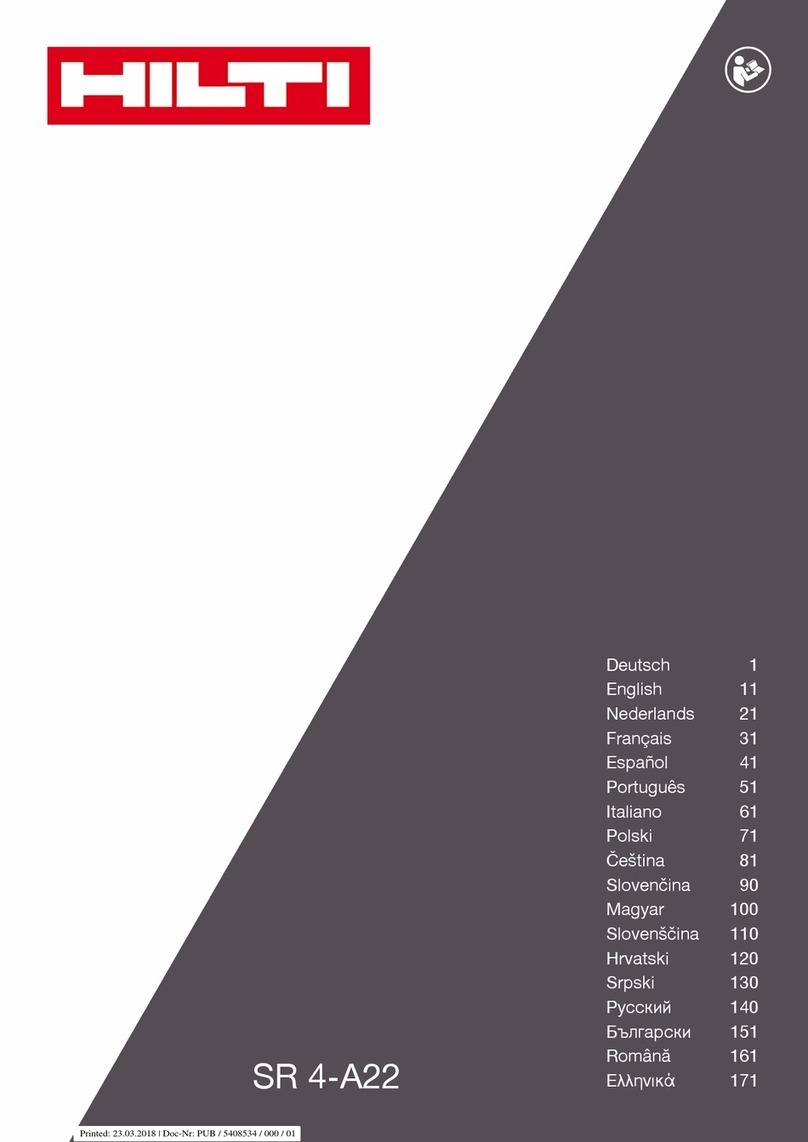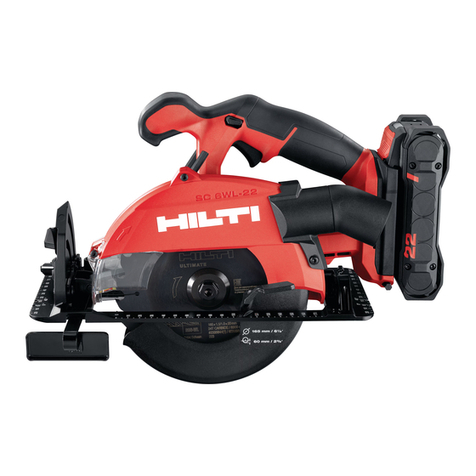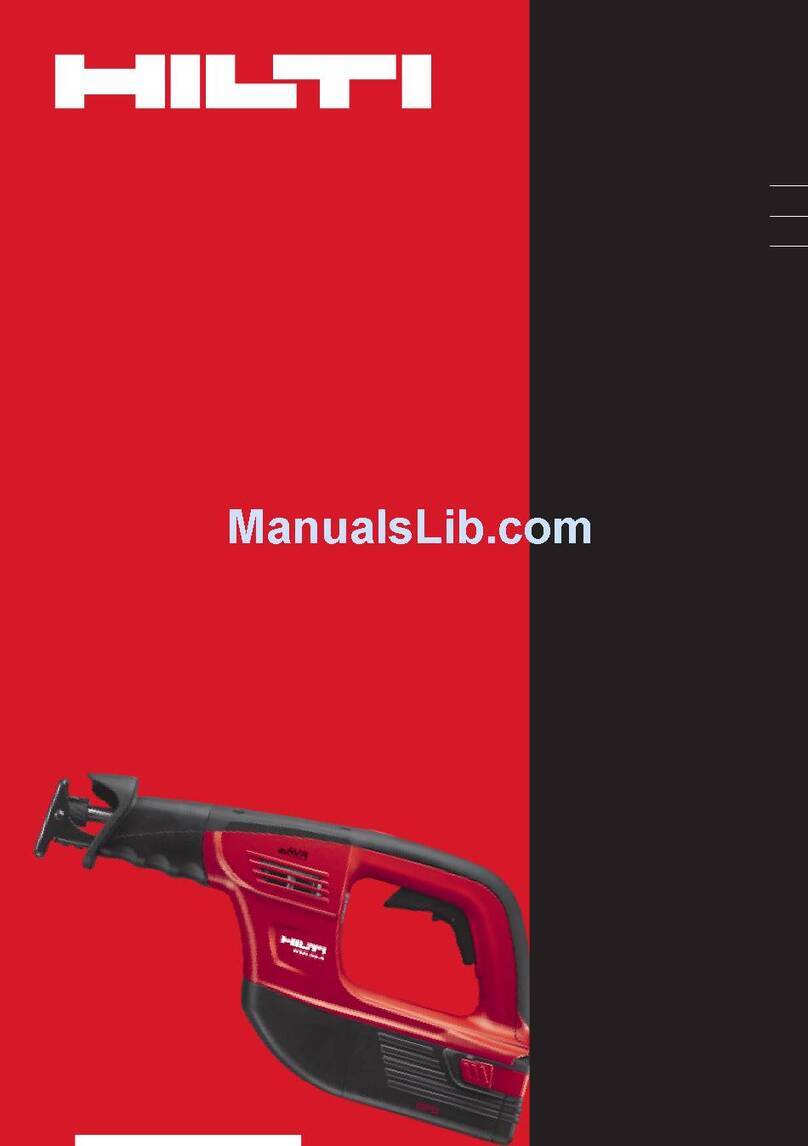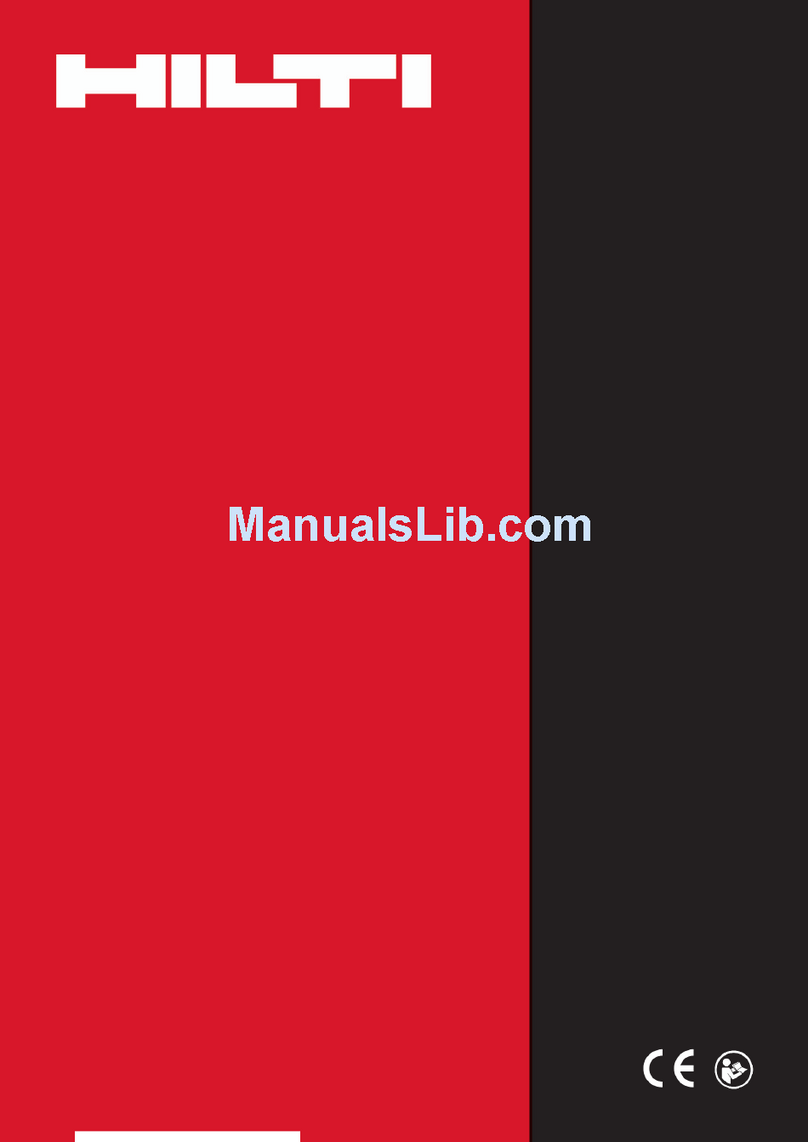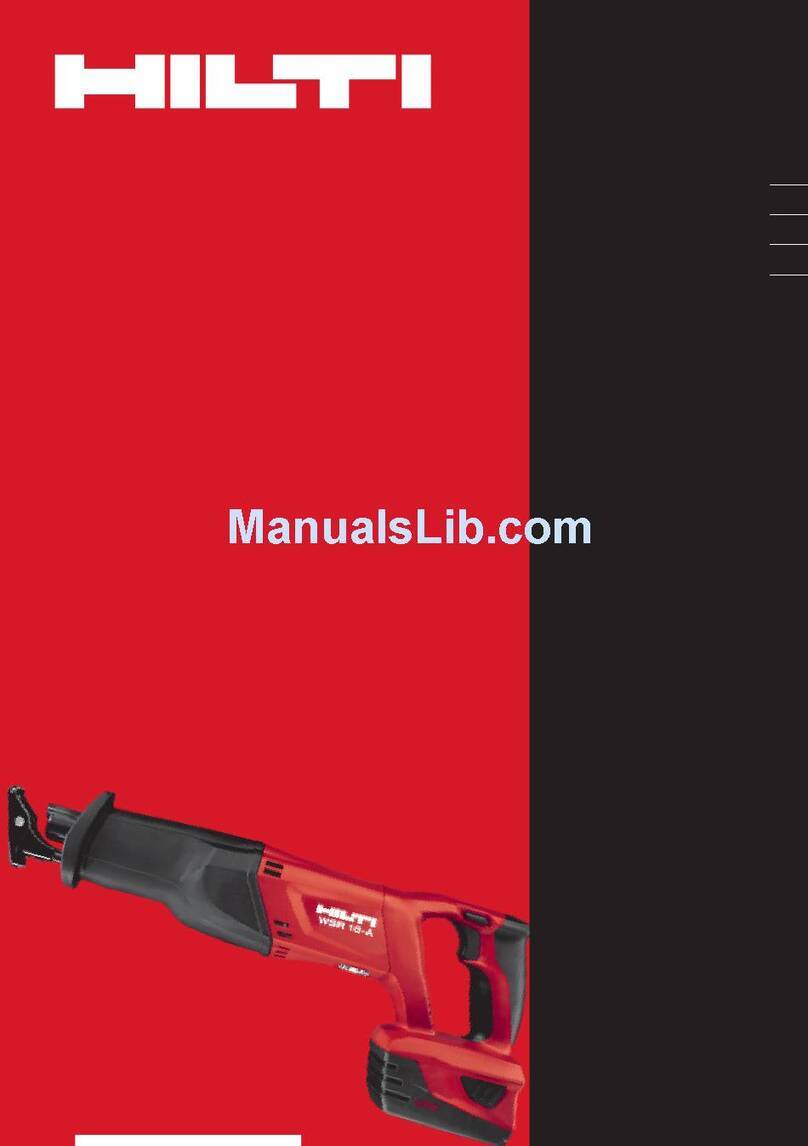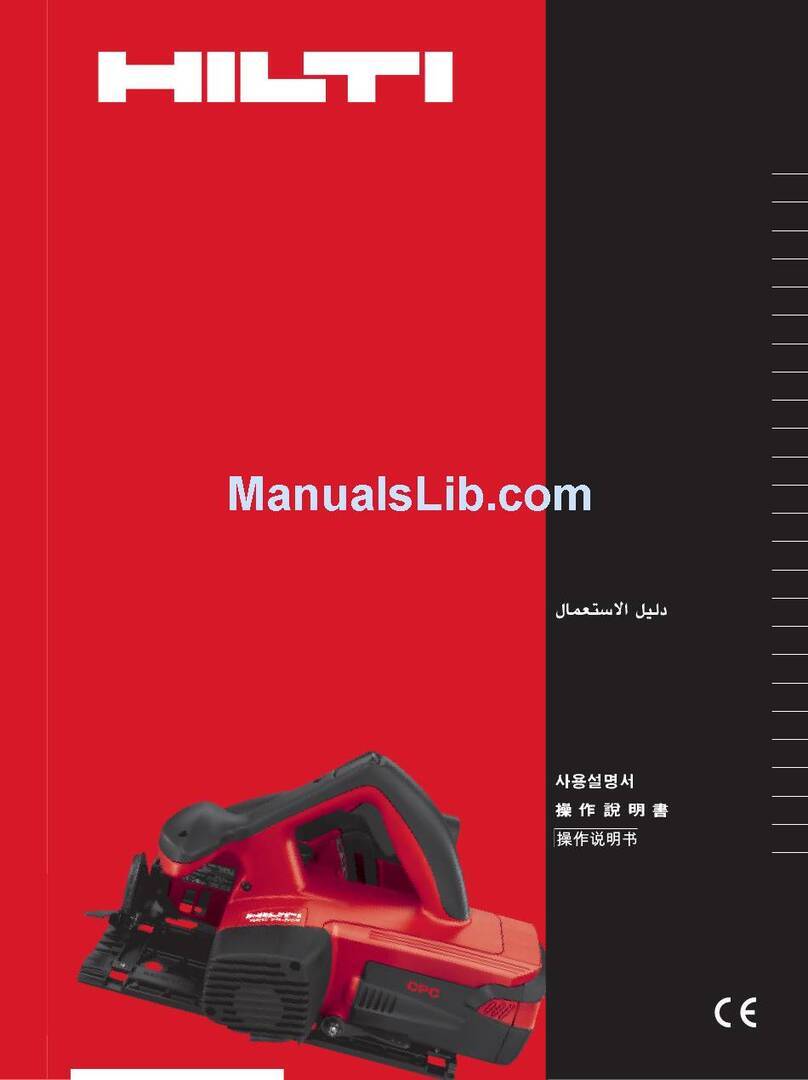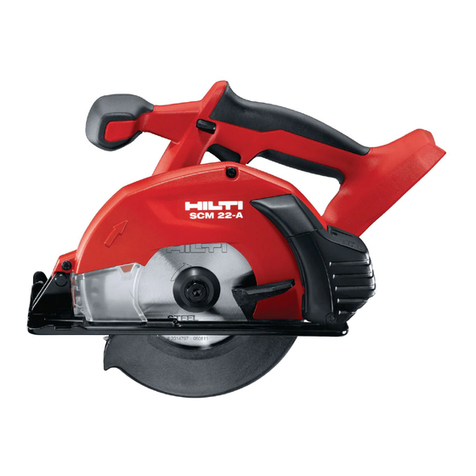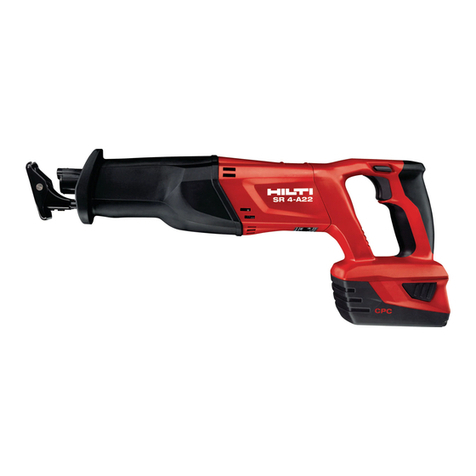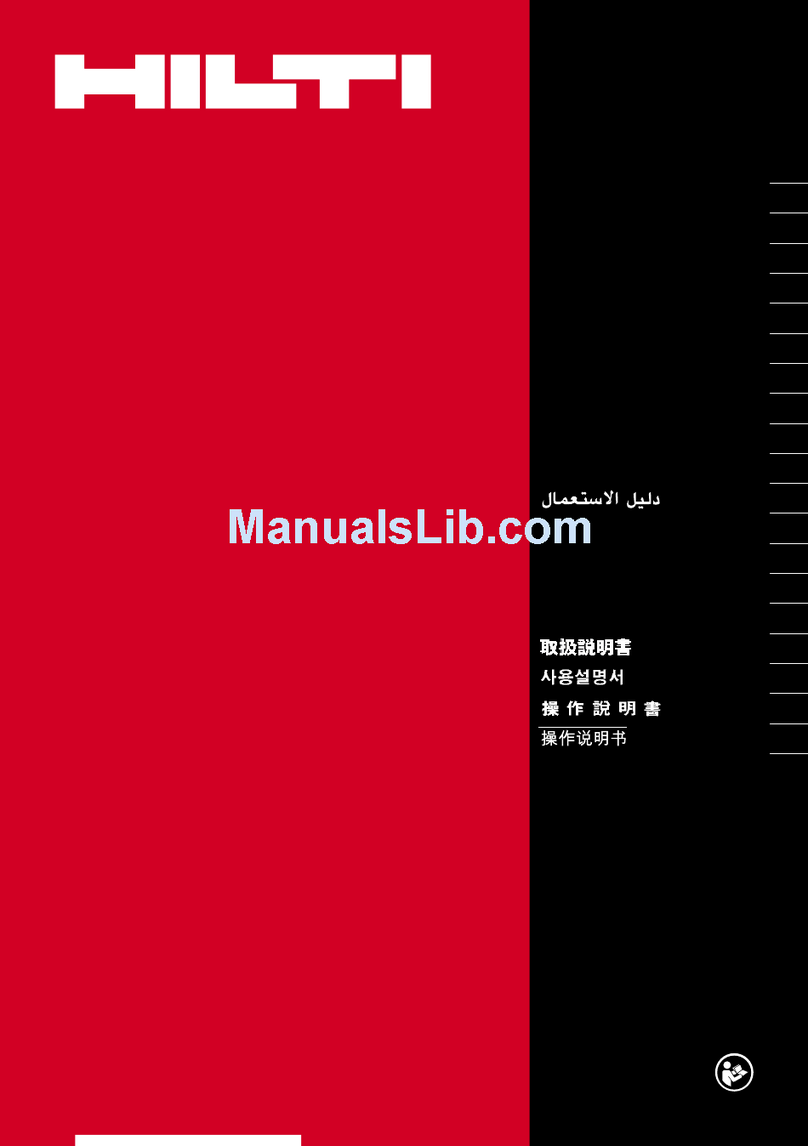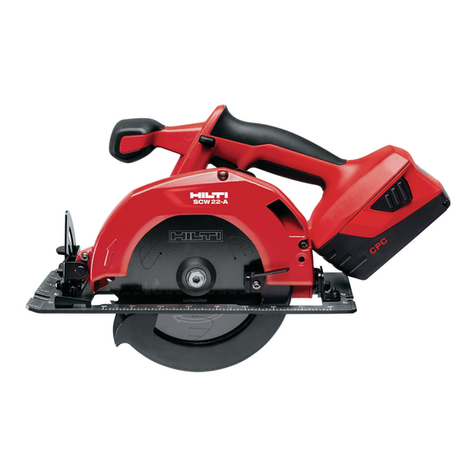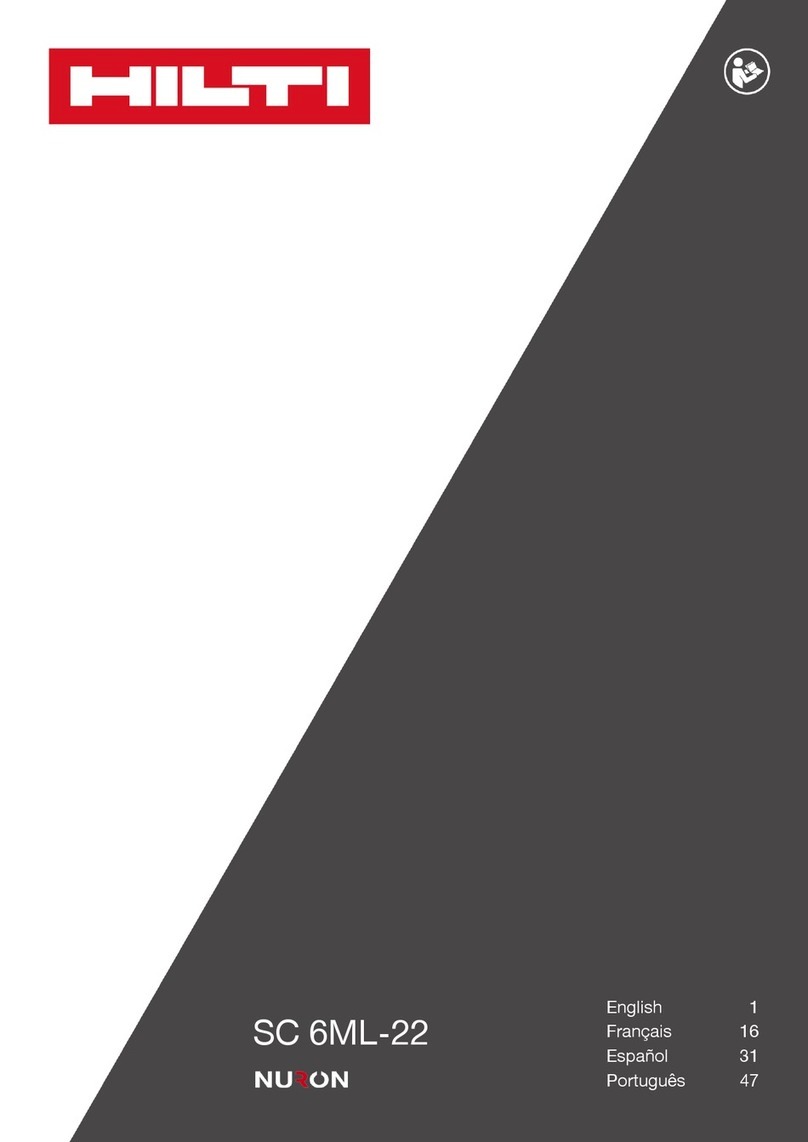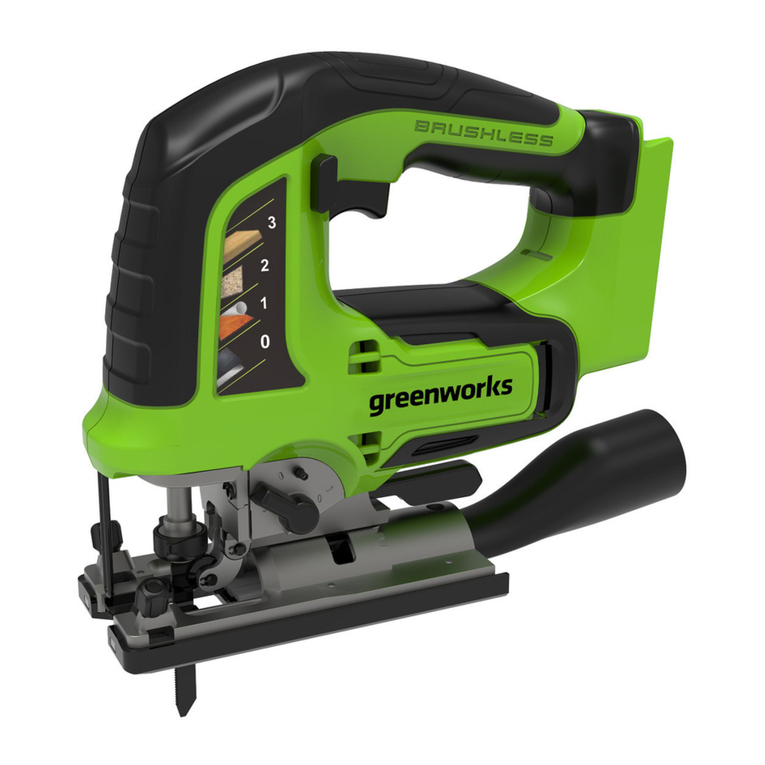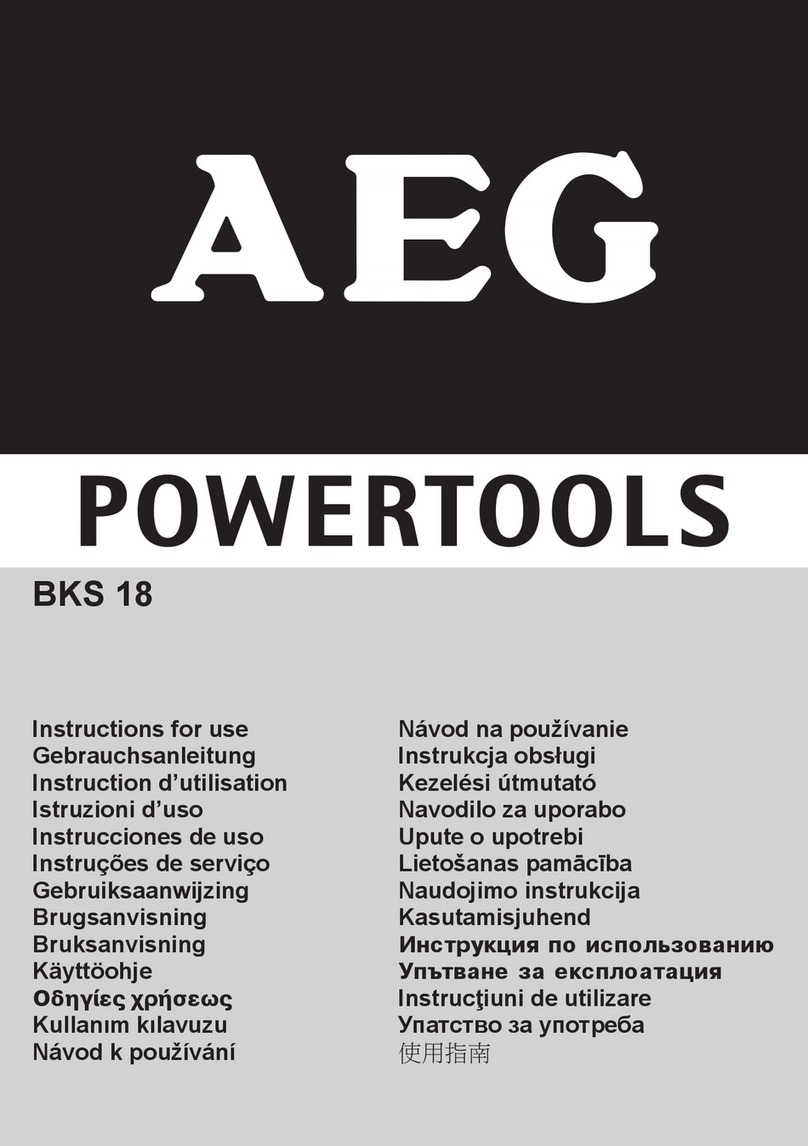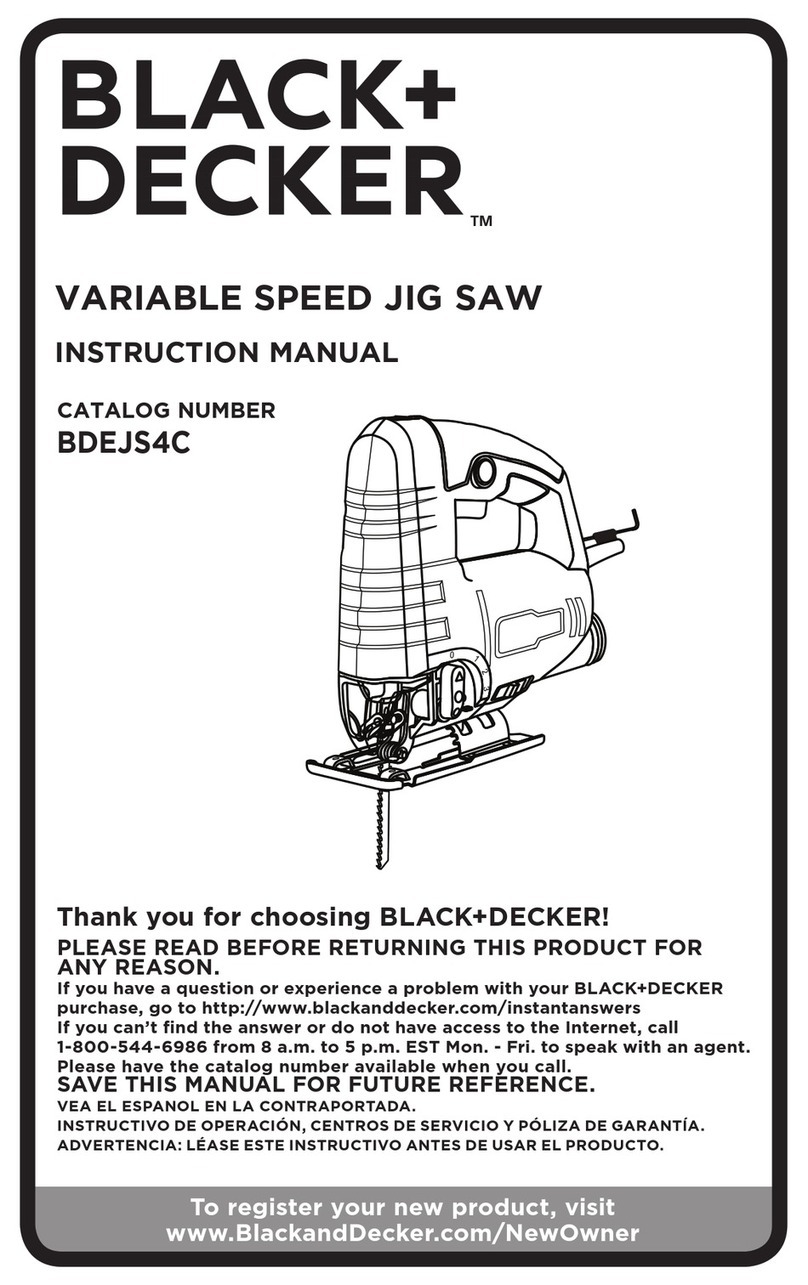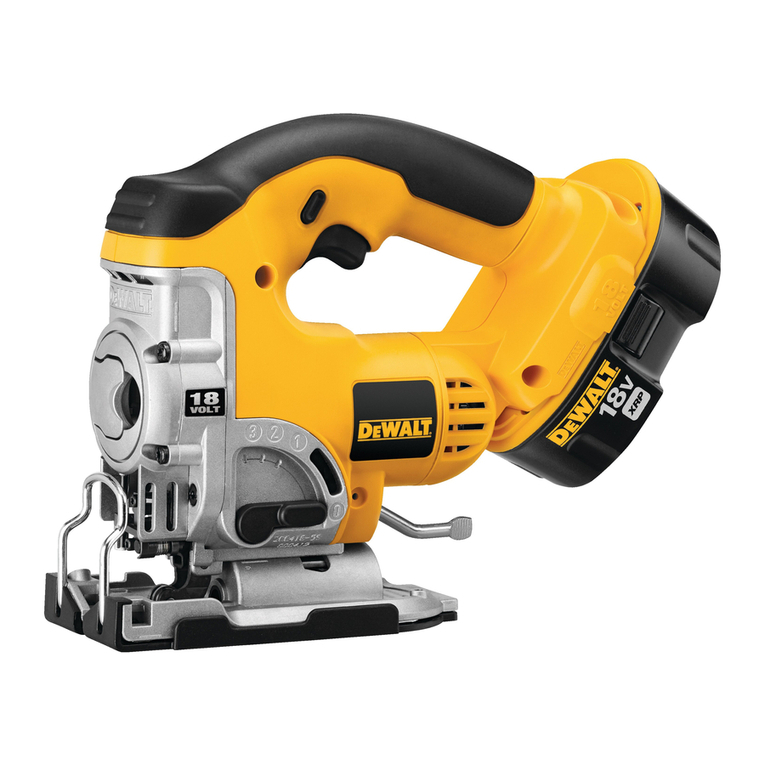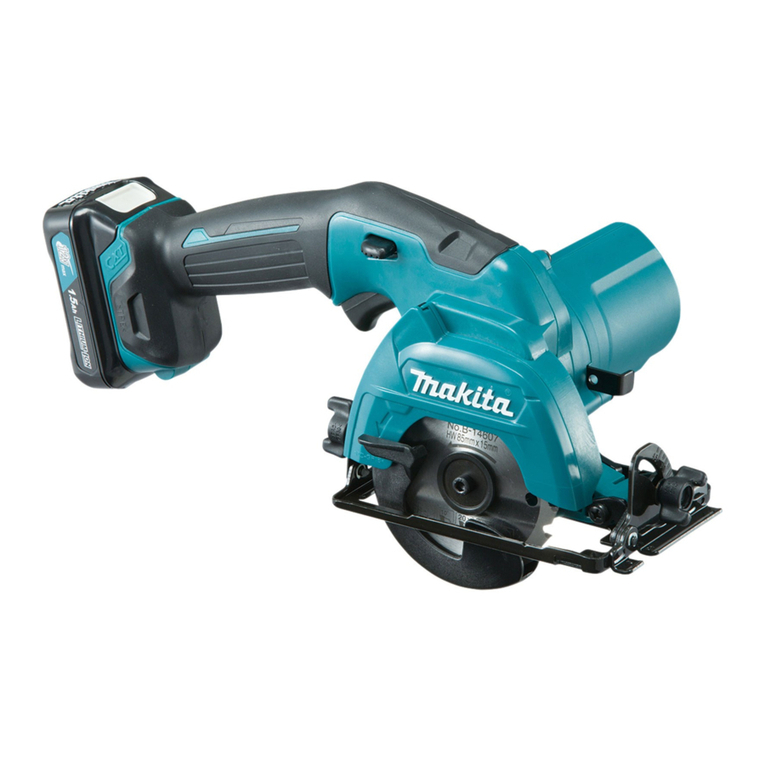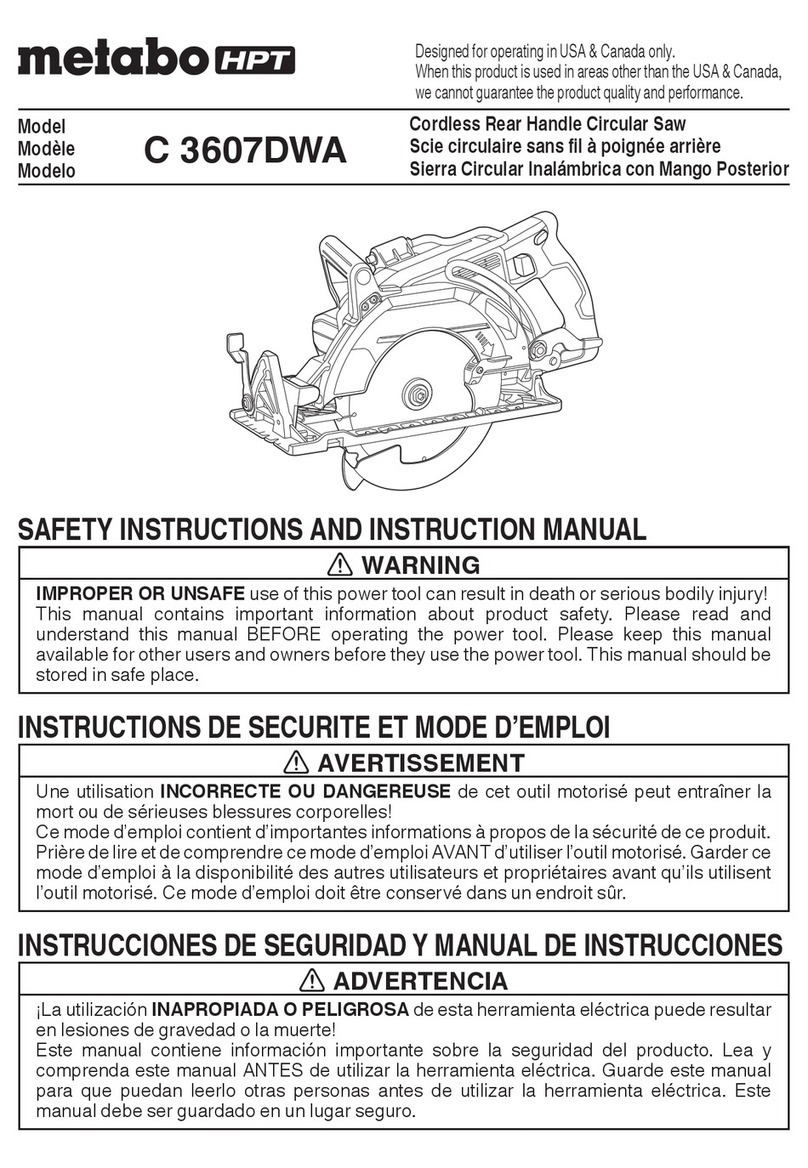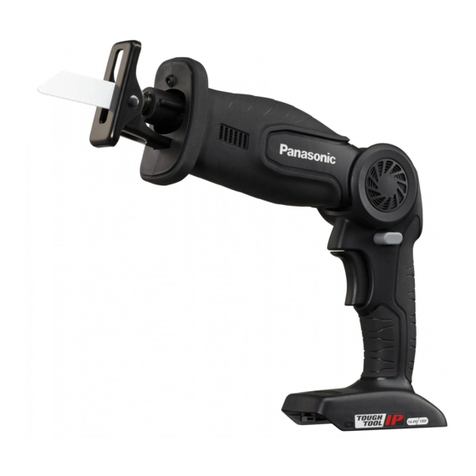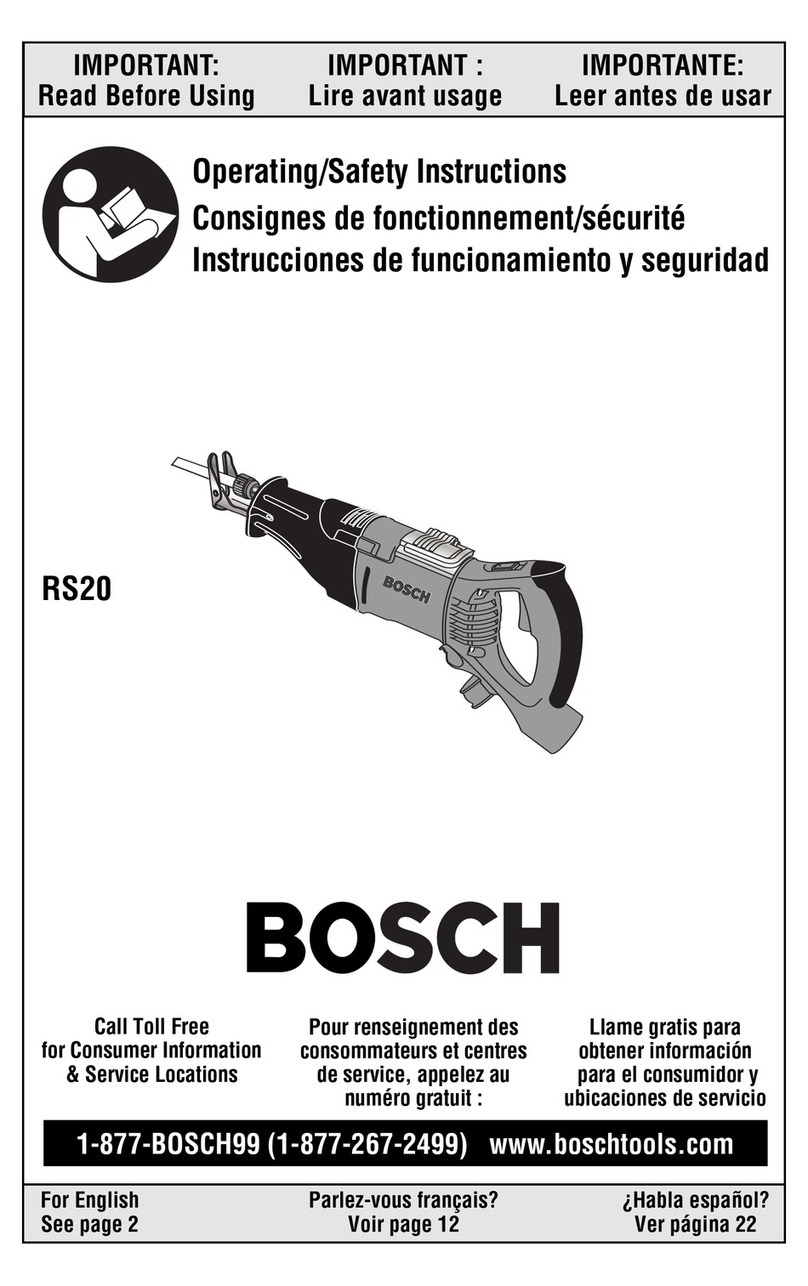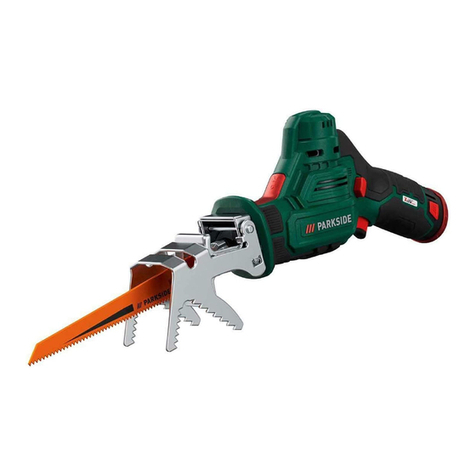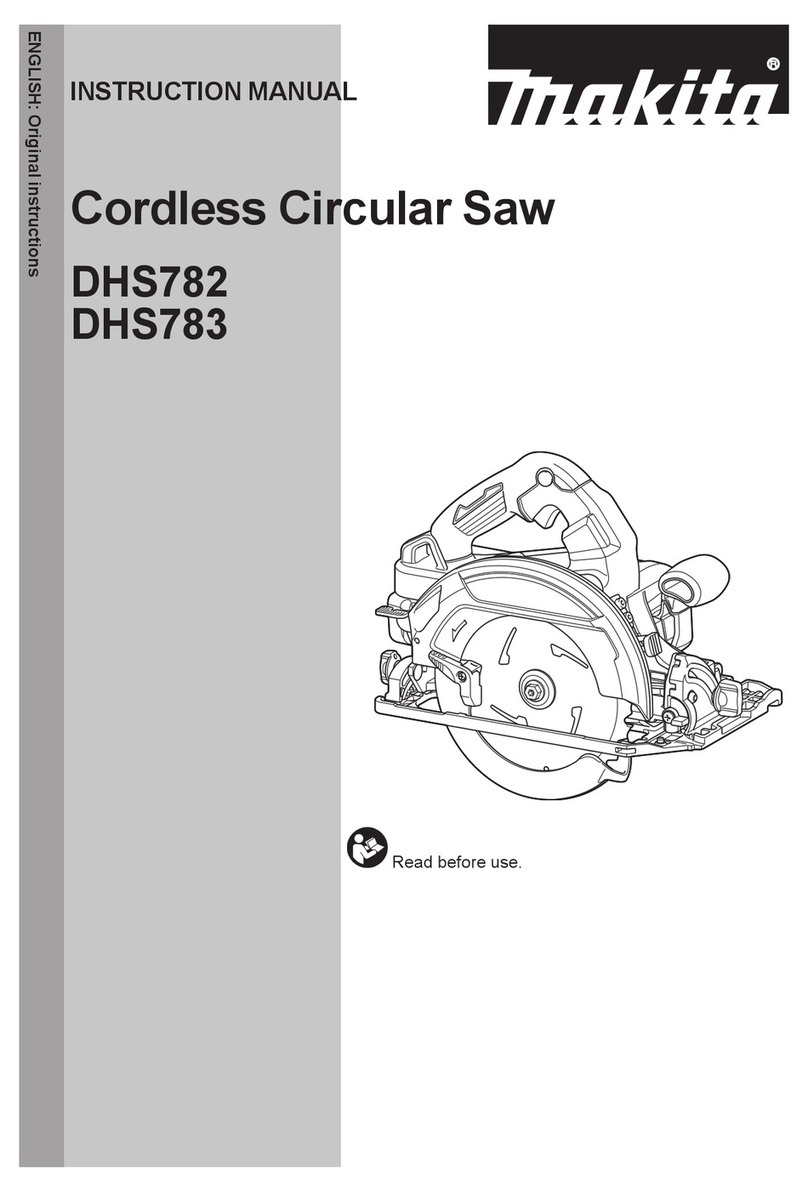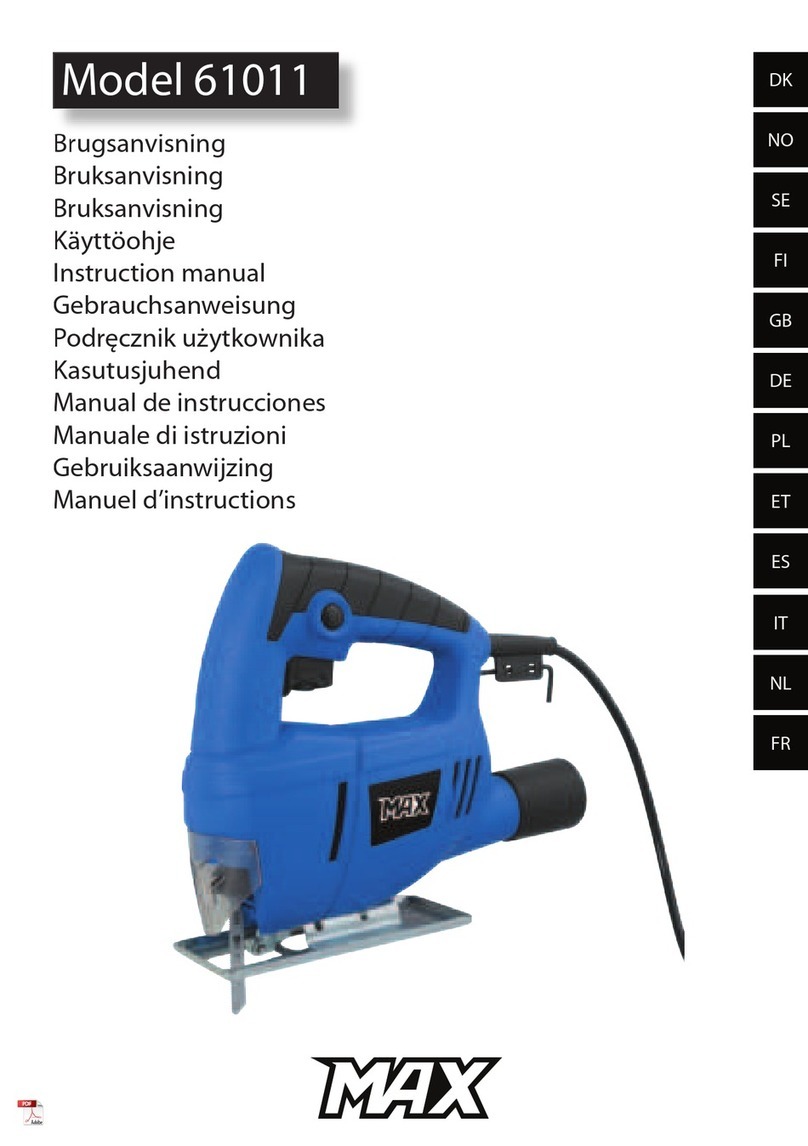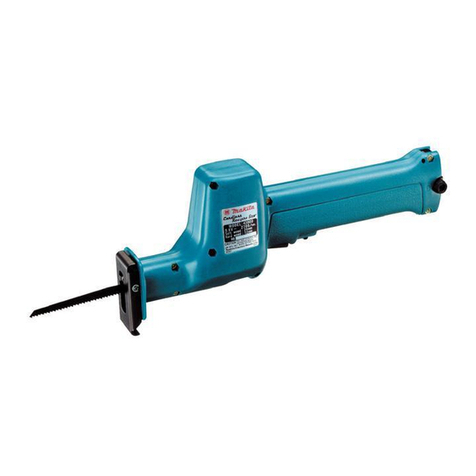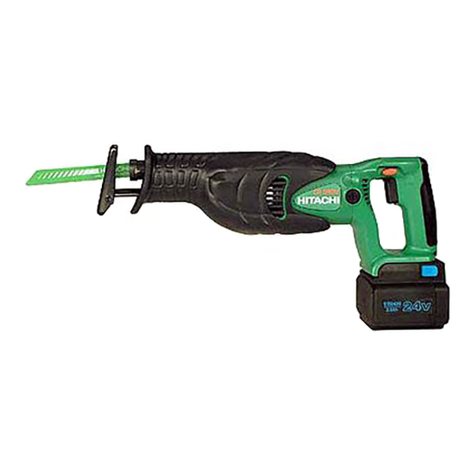
3
tool cannot be guaranteed. If any parts are damaged, have these parts repaired before using the
tool. Many accidents are caused by poorly maintained power tools.
▶Keep cutting tools sharp and clean. Properly maintained tools with sharp cutting edges are less likely
to jam and are easier to control.
Using and handling the cordless power tool
▶Use only the specified batteries in the power tools. Use of any other batteries may present a risk of
injury and fire.
▶Recharge the batteries only with the chargers specified by the manufacturer. A charger that is
suitable for a certain type of battery may present a risk of fire when used with other types of battery.
▶When the battery is not in use, keep it away from other metal objects such as paper clips, coins,
keys, nails, screws, or other small metal objects that could cause bridging between the terminals.
A short circuit between the battery terminals may cause burns or a fire.
▶Liquid may leak from the battery if used incorrectly. Avoid contact with this liquid. Liquid leaking
from the battery may cause skin irritation or burns. If contact accidentally occurs, rinse with water. Seek
medical attention if the liquid comes into contact with the eyes.
2.2 Safety instructions for jig saws/reciprocating saws/band saws
▶Hold the power tool by the insulated gripping surfaces when carrying out work in which the
accessory tool can come into contact with concealed wiring. Metal parts of the power tool can also
become live, resulting in electric shock, if contact is made with a live cable.
2.3 Additional safety instructions
Personal safety
▶Use clamps or another practical way to secure and support the workpiece to a stable platform. Holding
the work by hand or against your body leaves it unstable and may lead to loss of control.
▶Modification of the power tool is not permitted.
▶Wear ear protectors. Exposure to noise can cause hearing loss.
▶Respiratory protection must be worn if the power tool is used without a dust removal system for
work that creates dust.
▶Improve the blood circulation in your fingers by relaxing your hands and exercising your fingers
during breaks between working.
▶The power tool is not intended for use by inexperienced persons who have received no special
training.
▶Keep the power tool out of reach of children.
▶Wear protective gloves when changing accessory tools as accessory tools get hot during use and
cutting edges of saw blades are sharp.
▶Switch the product on only after bringing it into the working position.
▶Engage the transport lock before storing or transporting the tool.
▶Avoid unintentional starting. Never carry the power tool with your finger on the control switch. Remove
the battery from the power tool during work breaks, before carrying out maintenance, before changing
accessory tools and before transporting the power tool.
▶Observe the national health and safety requirements.
▶Dust from materials, such as paint containing lead, some wood species, concrete / masonry / stone
containing silica, and minerals as well as metal, may be harmful. Contact with or inhalation of the dust
may cause allergic reactions and/or respiratory or other diseases to the operator or bystanders. Certain
kinds of dust are classified as carcinogenic such as oak and beech dust, especially in conjunction with
additives for wood conditioning (chromate, wood preservative). Material containing asbestos may be
handled only by specialists. Use a dust removal system whenever possible. To achieve a high level
of dust collection, use a suitable vacuum cleaner. When indicated, wear a respirator appropriate
for the type of dust generated. Ensure that the workplace is well ventilated. Follow national
requirements for the materials you want to work with.
Electrical safety
▶Before beginning work, check the working area (e.g. using a metal detector) to ensure that no
concealed electric cables or gas and water pipes are present. External metal parts of the power tool
may become live, for example, when an electric cable is damaged accidentally. This presents a serious
risk of electric shock.
Special safety instructions for reciprocating saws
▶Always guide the power tool away from your body when working with it.
▶Never position your hands ahead of or on the saw blade.
Printed: 27.07.2016 | Doc-Nr: PUB / 5293021 / 000 / 00
